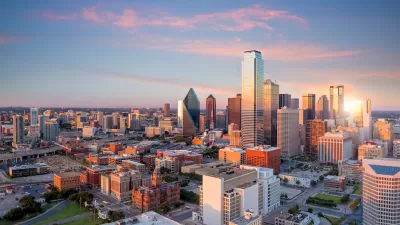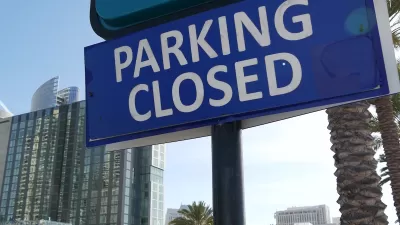Hi - I'm excited about the start of this blog! I am the co-founder and editor-in-chief of The Next American City, where we promote socially and environmentally sustainable economic growth for American cities and suburbs in our magazine, events, and op-eds. Looking forward to the conversations over the coming months and years on this site, and I'm always open to ideas for what I should discuss here, or what our team at TNAC, including our President Seth Brown, Publisher Michelle Kuly, Editor Jess McCuan, and everyone else that makes TNAC happen, should cover. The national media is obsessed with the story of central cities coming back. Let's put aside whether this story is real or not (one on hand, I could show you similar clippings from any of the last five decades and suburban growth rates are still much higher; on the other hand, there does seem to be a slight resurgence in many cities lately that goes beyond what we've seen in the past). My question - from a planning standpoint - is - who cares?
Hi - I'm excited about the start of this blog! I am the co-founder and editor-in-chief of The Next American City, where we promote socially and environmentally sustainable economic growth for American cities and suburbs in our magazine, events, and op-eds. Looking forward to the conversations over the coming months and years on this site, and I'm always open to ideas for what I should discuss here, or what our team at TNAC, including our President Seth Brown, Publisher Michelle Kuly, Editor Jess McCuan, and everyone else that makes TNAC happen, should cover.
The national media is obsessed with the story of central cities coming back. Let's put aside whether this story is real or not (one on hand, I could show you similar clippings from any of the last five decades and suburban growth rates are still much higher; on the other hand, there does seem to be a slight resurgence in many cities lately that goes beyond what we've seen in the past). My question - from a planning standpoint - is - who cares?
I say this from the perspective of a "suburban" resident. I live in Collingswood, New Jersey, about seven miles from center city Philadelphia. My neighborhood is closer to center city both by driving and, yes, more convenient by public transit, than many of the outer neighborhoods of Philadelphia itself. I can walk to restaurants, all kinds of stores, and my office. I'll admit that there certainly isn't as much going on in Collingswood as in center city - but there's a lot more going on, and from a planning perspective everything works a lot better, than in much of Philadelphia.
Planners and people looking at data tend to attach great importance to the boundaries we look at on the map between city and suburb. But in most of the country, these boundaries reflect archaic systems of municipal law instead of any kind of real distinction between places. Many suburbs are more urban than many central city neighborhoods; suburbs now have more poor people than cities; and as Joel Garreau long ago pointed out many suburbs have more significant job and shopping agglomerations than central cities.
At this point in the post, most of you are probably saying that you know all of this already. Then why do we still make policy as if the central city-"suburb" distinction actually matters? Look at how HUD funds are distributed; where allocations of affordable housing such as low-income housing tax credits go; where state and federal programs designed to provide education aid focus; where we invest in transit and urban amenities; and, yes, where all of those celebrated media reports on cities focus. Too often, we reinforce these arbitrary boundaries instead of breaking them down. In doing so, we make bad policy, and often reinforce patterns of racial and economic segregation in the name of "helping cities."
Fortunately, some regions have done a better job of getting beyond lines on a map to make true regional policy. The recently opened Orange Line bus rapid transit line and bikeway in Los Angeles' San Fernando Valley recognizes the need for alternative transportation options addressing commuting patterns that are not focused around central cities; Louisiana, partly in response to the interest of many Katrina refugees in staying in outlying areas instead of moving back within the political boundaries of New Orleans, has changed its low-income housing tax credit allocation process to favor locating affordable housing where there is currently greater shortage of such housing; and numerous "first suburbs" mayors groups in states such as Ohio and New Jersey have argued for the need for policies that address the issues facing smaller, older suburbs like where I live.
I hope that planning and architecture programs will start to focus more on these challenges and move away from an anti-"suburban" bias, so that we get more of these programs in the future. Sure, there are lots of soulless places that fit the traditional picture of sprawl. But there are also lots of supposedly "suburban" places that actually have more urban life in them than central cities, and need planners' attention to keep them vibrant.

Maui's Vacation Rental Debate Turns Ugly
Verbal attacks, misinformation campaigns and fistfights plague a high-stakes debate to convert thousands of vacation rentals into long-term housing.

Planetizen Federal Action Tracker
A weekly monitor of how Trump’s orders and actions are impacting planners and planning in America.

San Francisco Suspends Traffic Calming Amidst Record Deaths
Citing “a challenging fiscal landscape,” the city will cease the program on the heels of 42 traffic deaths, including 24 pedestrians.

Defunct Pittsburgh Power Plant to Become Residential Tower
A decommissioned steam heat plant will be redeveloped into almost 100 affordable housing units.

Trump Prompts Restructuring of Transportation Research Board in “Unprecedented Overreach”
The TRB has eliminated more than half of its committees including those focused on climate, equity, and cities.

Amtrak Rolls Out New Orleans to Alabama “Mardi Gras” Train
The new service will operate morning and evening departures between Mobile and New Orleans.
Urban Design for Planners 1: Software Tools
This six-course series explores essential urban design concepts using open source software and equips planners with the tools they need to participate fully in the urban design process.
Planning for Universal Design
Learn the tools for implementing Universal Design in planning regulations.
Heyer Gruel & Associates PA
JM Goldson LLC
Custer County Colorado
City of Camden Redevelopment Agency
City of Astoria
Transportation Research & Education Center (TREC) at Portland State University
Jefferson Parish Government
Camden Redevelopment Agency
City of Claremont





























